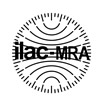Indoor air quality (IAQ) in offices or business centres is considered one of the most important health concerns in industrialised nations.
In fact, a high percentage of people believe that poor indoor air quality in their workplace has a negative impact on their daily productivity and well-being.
So how can indoor air quality in offices be measured and maintained?
Symptoms associated with poor air quality in offices and indoor environments
Some of the reported symptoms associated with this indoor environment were
- Loss of concentration
- Fatigue
- Reduced productivity
- Watery or irritated eyes
But the effects can be far more serious.
Steven Loughney of Siemens Building Technologies says: “The health effects of poor outdoor air quality are well documented and have been linked to respiratory infections, lung cancer and chronic obstructive pulmonary disease. In an indoor environment, the same pollutants are present mixed with dust, upholstery fibres, spores, cleaning products, photocopying waste or building materials, creating an unhealthy cocktail of contaminants that eventually spreads throughout the workplace”.
Main indoor air quality pollutants in offices
Although Loughney’s quote serves as a brief introduction to the elements that “float” in office air, a brief review of the most important ones is still convenient.
The main pollutants in office air are:
Carbon monoxide (CO)
Carbon dioxide (CO2)
Volatile organic compounds (VOCs)
Particulate matter (PM5 and PM10)
Ozone (O3)

Source: Encyclopaedia of health and safety at work. ©INSSBT. National Institute for Safety, Health and Welfare at Work. Spain.
Most of these gases and compounds are well known, but it is worth focusing on the three with the most serious effects: VOCs, particulate matter and ozone.
What are volatile organic compounds or VOCs?
As mentioned in the article “Why is it important to detect Volatile Organic Compounds VOCs?“, VOCs are “chemical substances containing carbon and other elements such as hydrogen, oxygen, fluorine, chlorine… that are easily converted into vapours or gases”.
As for their effects on health, and as the National Institute for Safety and Hygiene at Work states, “studies show that a large proportion of the VOCs normally present in indoor air are irritating to mucous membranes, eyes and skin, and some of them are suspected or proven CMRs (carcinogenic, mutagenic and/or toxic to reproduction)”.
What are airborne particles?
Particulate matter is a mixture of solid and liquid material suspended in the air, consisting mainly of carbon, hydrocarbons and inorganic compounds.
They are dangerous because of their small size, between 10 microns (µm) and ultrafine (PM0.1µm), and are a vehicle for many chemical substances of uncertain origin to enter the body.

In terms of health effects, numerous studies have shown a link between particulate matter and an increase in respiratory and cardiovascular diseases.
Also symptomatic were the results obtained by a team of researchers from the National University of Singapore, who found that an increase in PM2.5 of 10 micrograms per cubic metre sustained for 25 days reduces daily production by 1 %. It should be noted, however, that this study was carried out in an industrial plant and that, although the relationship between PM2.5 particles and productivity could be extended to other work environments such as offices, it would be necessary to check whether the results are similar.
What is ozone?
Ozone is an atmospheric trace gas with a high oxidation potential. Its presence is essential in the stratosphere, where the ozone layer that protects the Earth from ultraviolet radiation is located. However, it is undesirable in the lower layers of the atmosphere (tropospheric ozone) and in enclosed environments because it reacts readily with many compounds to form oxygenated organic species and particles.
Its health effects, as reported on the Canadian government’s website, include reduced lung function in acute exposures (up to 4 hours).
In conclusion, the best way to create a healthy working environment is to create a healthy atmosphere in which monitoring air quality is a priority, an activity that should even be demanded by the employees themselves. As we have seen, the consequences can go far beyond simple eye discomfort or reduced performance.
At Envira, we have developed an indoor air quality monitoring solution that provides information on the presence of pollutants, contributing to greater safety in terms of the quality of the air we breathe.
References:
- Hansen, D.L. (2010). Indoor Air Quality Issues. Abingdon: CRC Press (año de publicación del libro original; 1999). ISBN 978-1-56032-866-7.
- Moreno-Rangel, A., Sharpe, T., Musau, F., & McGill, G. (2018). Field evaluation of a low-cost indoor air quality monitor to quantify exposure to pollutants in residential environments. Journal Of Sensors And Sensor Systems, 7(1), 373-388. doi:http://doi.org/c2c4
- INSHT (2013). Calidad de aire interior: compuestos orgánicos volátiles, olores y confort. Instituto Nacional de Seguridad e Higiene en el Trabajo. Nota Técnica de Prevención núm. 972. http://www.insht.es/InshtWeb/Contenidos/Documentacion/NTP/NTP/Ficheros/961a972/972w.pdf
- Sánchez, P., Arellano, M., & Figueroa, A. (2018). Determinación de partículas en espacios de interior. En M. Orozco, J. García, A. Figueroa, V. Davydova, F. Moreno & G. Hernández et al., Diagnóstico ambiental en ciudades (p. 183). Guadalajara: Universidad de Guadalajara (Jalisco-México). https://www.researchgate.net/profile/Valentina_Davydova_Belitskaya2/publication/330524348_Confort_termico_bases_y_tecnica/links/5c462b6392851c22a386ebc8/Confort-termico-bases-y-tecnica.pdf
- Salonen, H., Salthammer, T., & Morawska, L. (2018). Human exposure to ozone in school and office indoor environments. Environment International, 119, 503-514. doi:http://doi.org/c2fv











